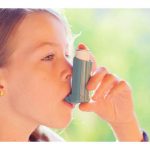
The brains of girls and boys who have binge eating disorder show key differences, according to a new study. That’s an important finding, researchers say, because both genders struggle with eating disorders, yet treatments are mainly targeted at girls. “Males have been excluded from research on eating disorders for decades,” said Stuart Murray, an associate professor of psychiatry and behavioral sciences at the University of Southern California’s Keck School of Medicine. He noted that the exclusion stems from the belief that it was uncommon for males to have eating disorders. “As a result of the exclusion of boys and men, we have developed treatments only from studying females, which we then apply to boys and men and hope they work with the same efficacy,” Murray said in a school news release. Some eating disorders are nearly as prevalent among men and boys as in women and girls. Evidence is mounting that eating disorders are diseases of the brain and not the result of social pressure or a lack of willpower, according to researchers. This research team used data from a study of adolescent brain development that included more than 11,800 participants. Researchers identified 38 boys and 33 girls who had a diagnosis of binge eating disorder. In all kids, boys represent about 57% of those with binge eating disorder. Adult males represent about 43% of… read on > read on >


















